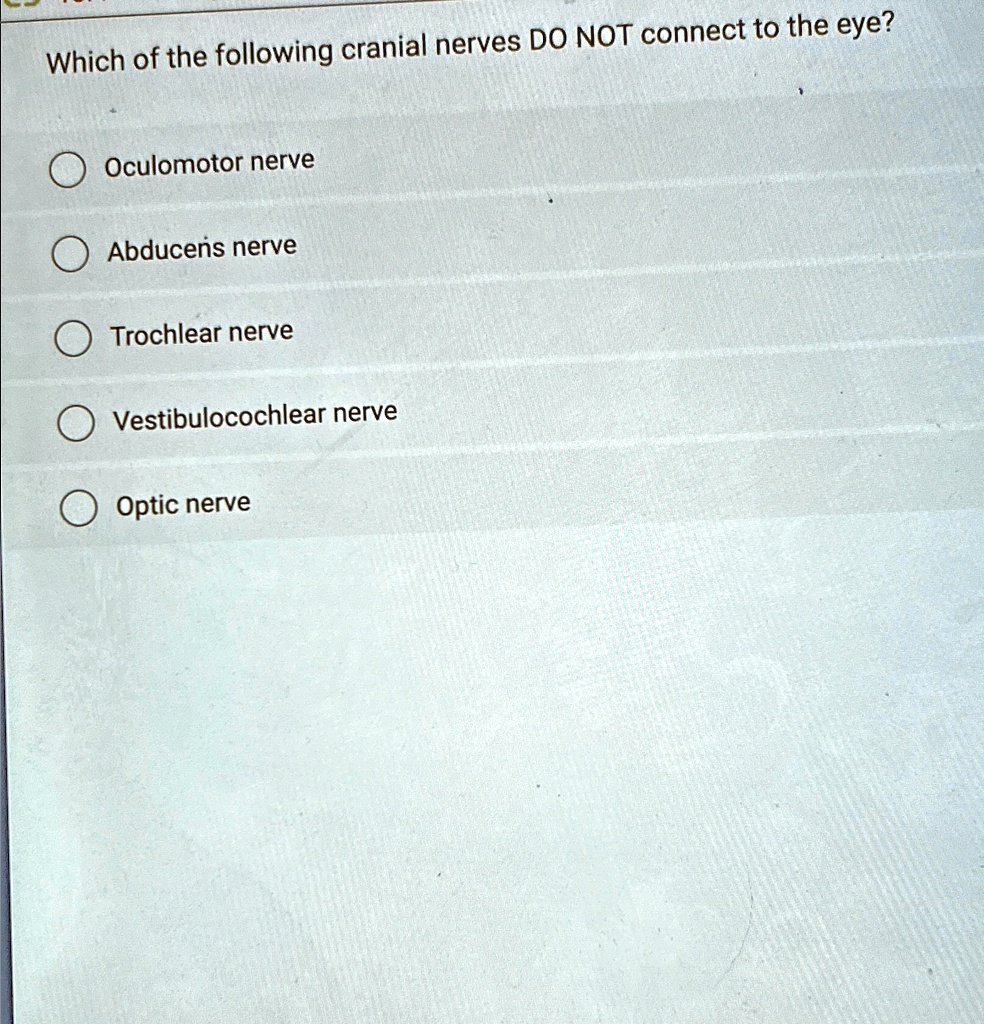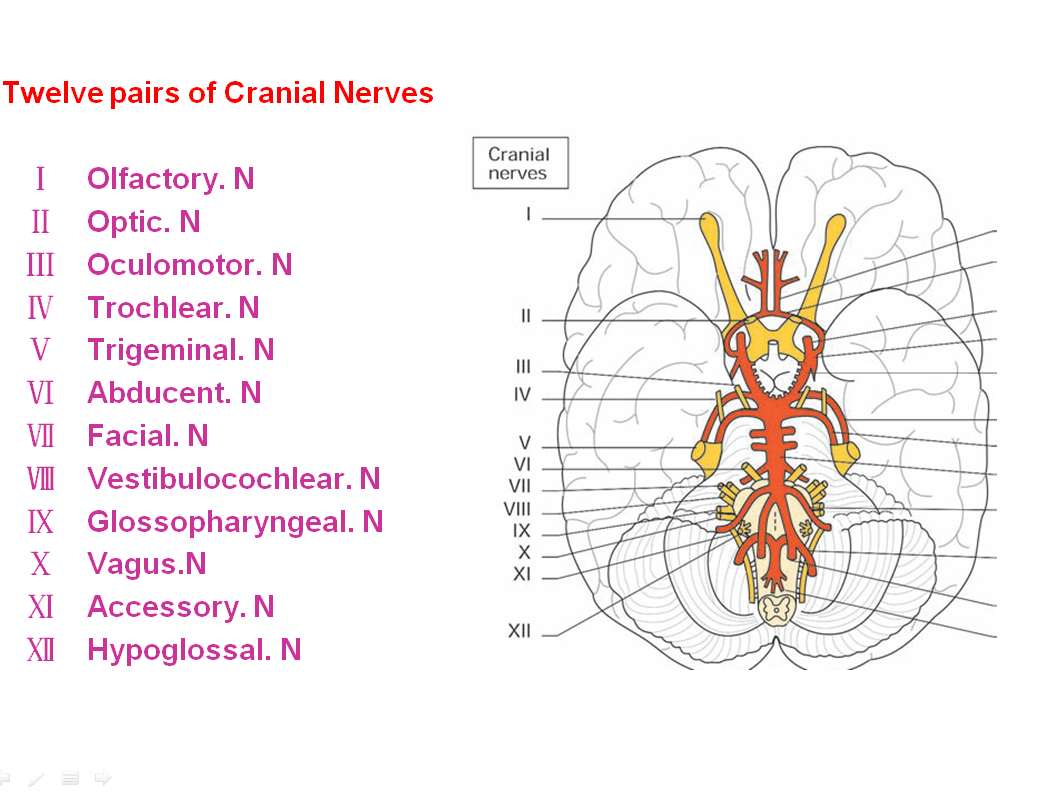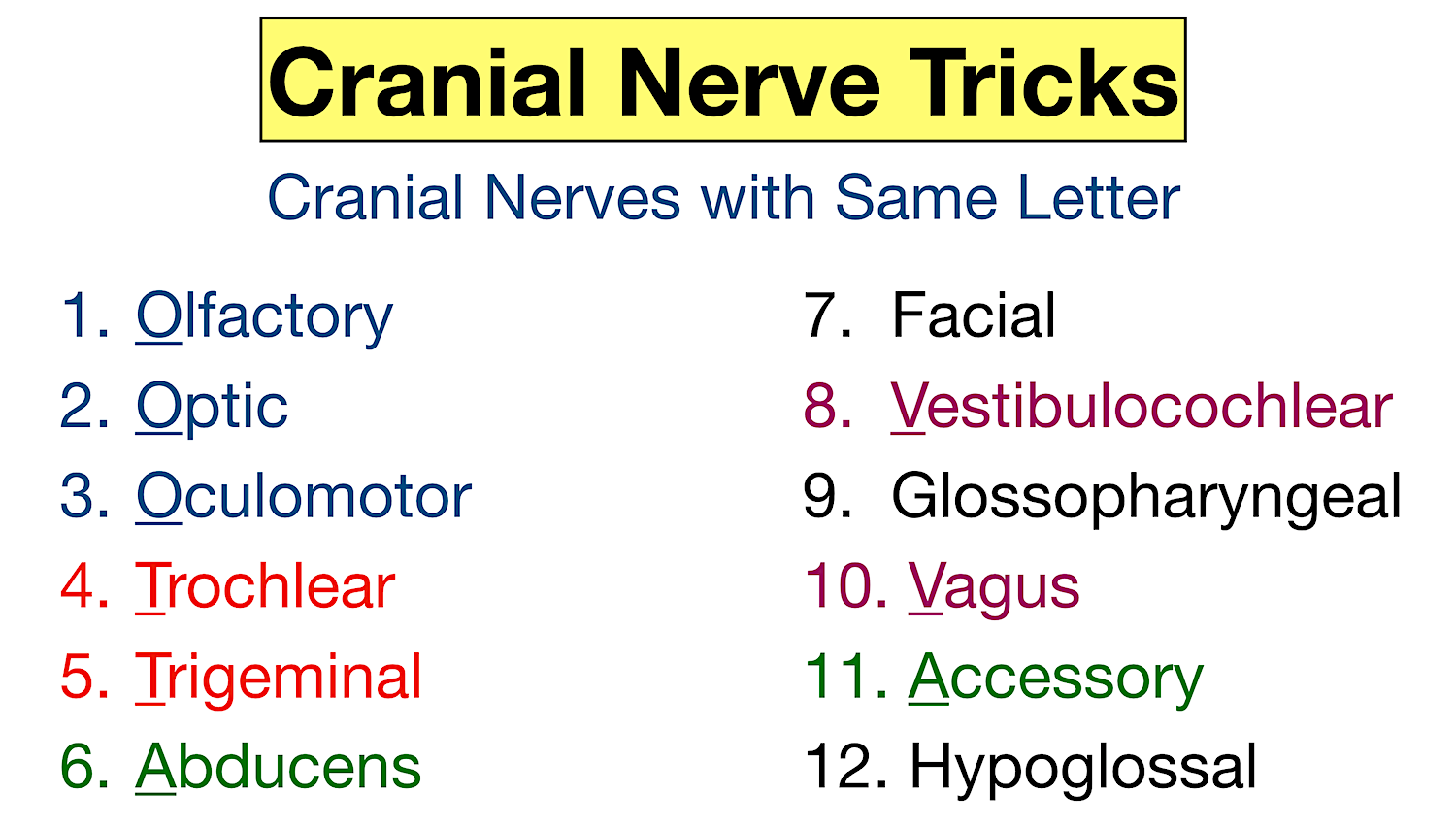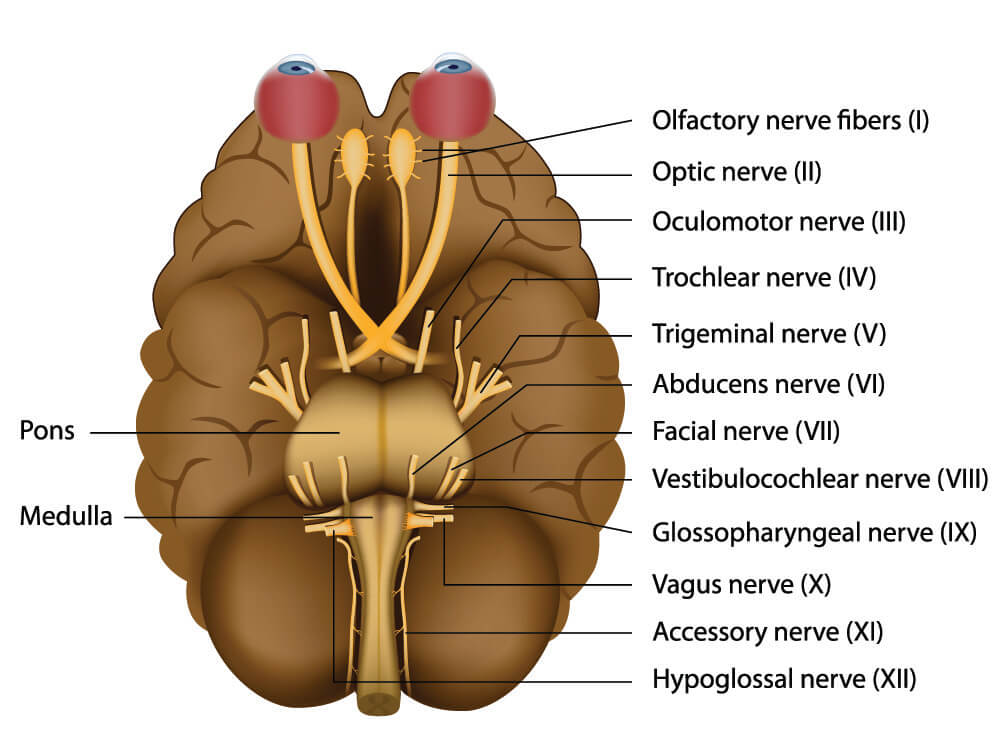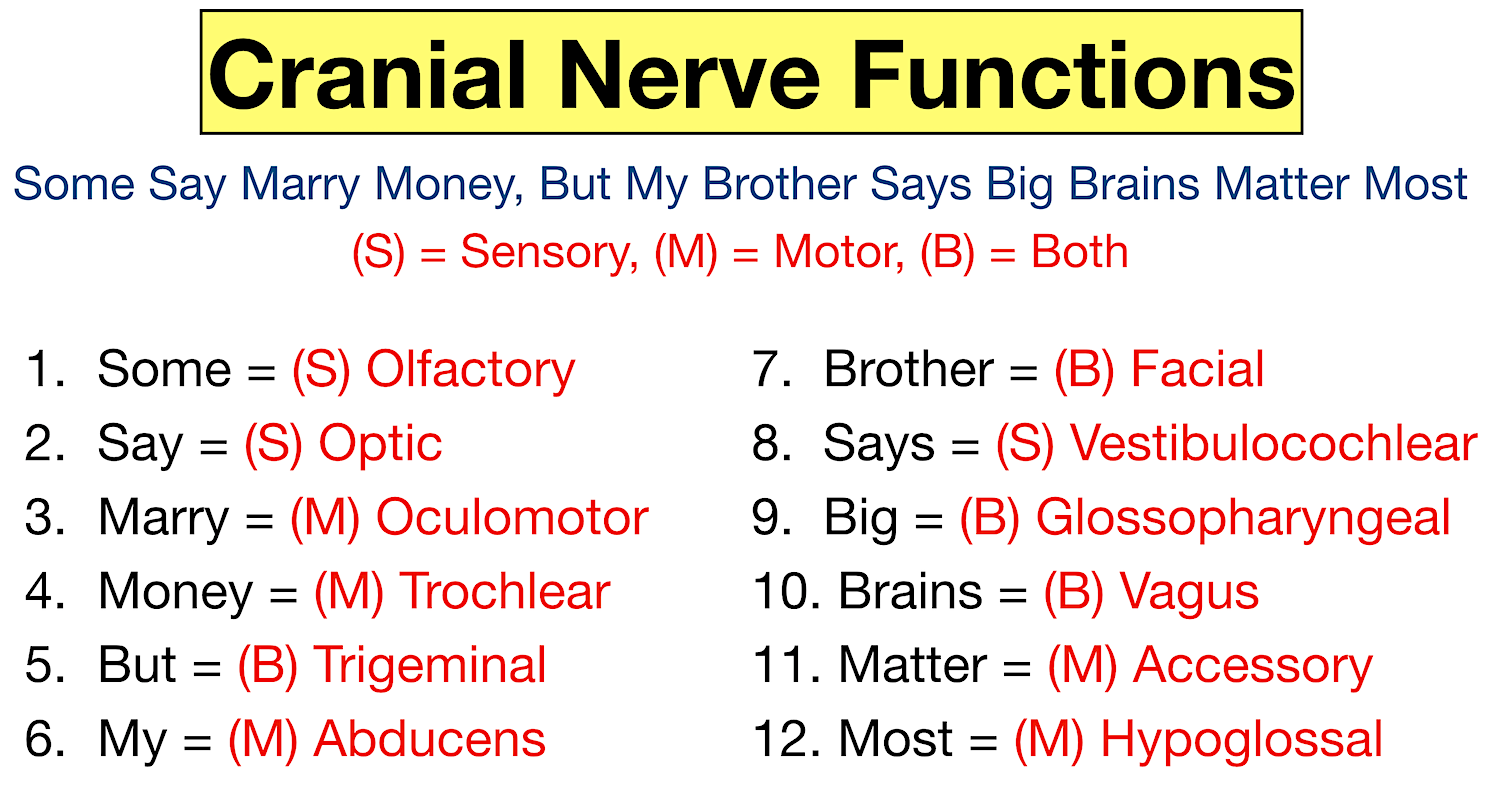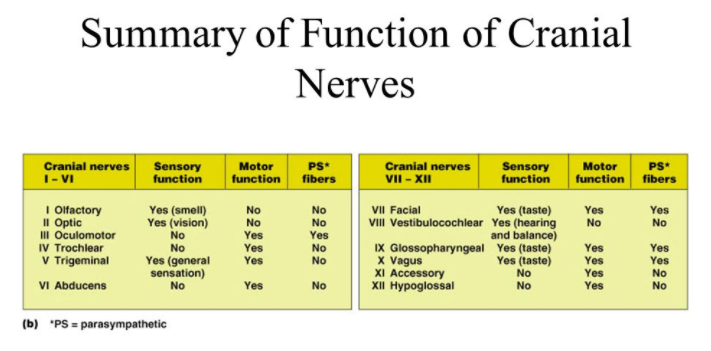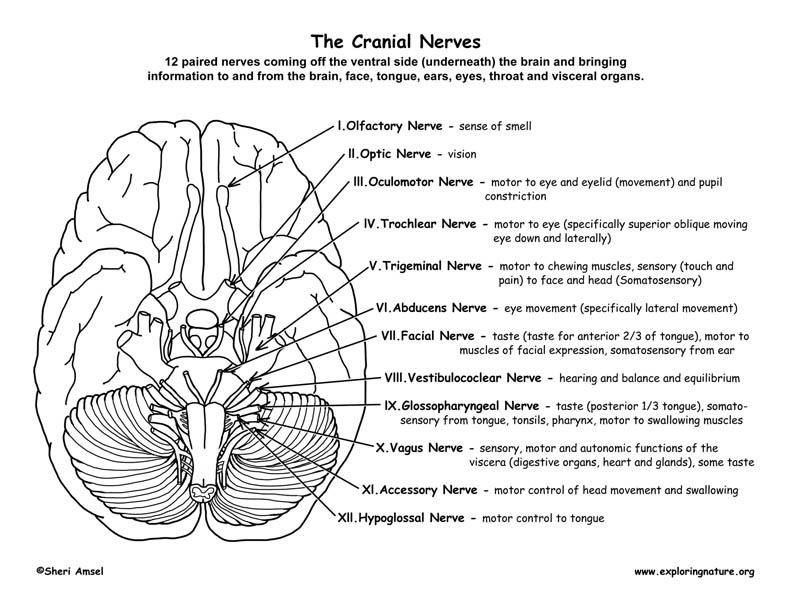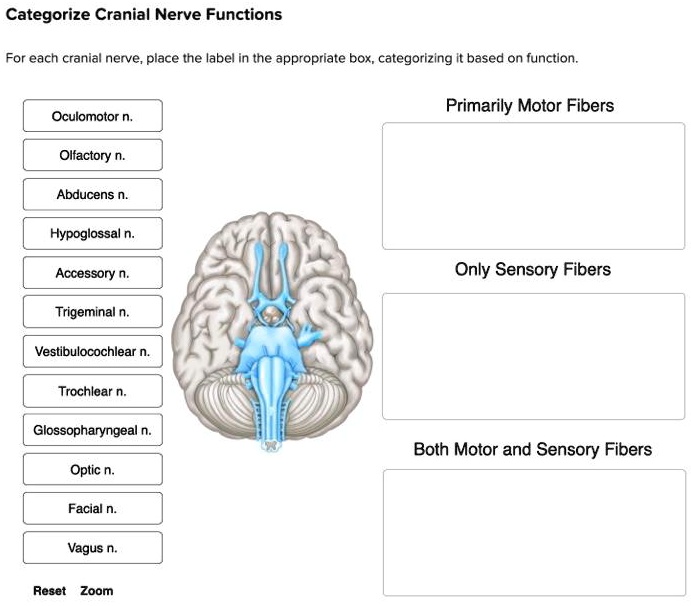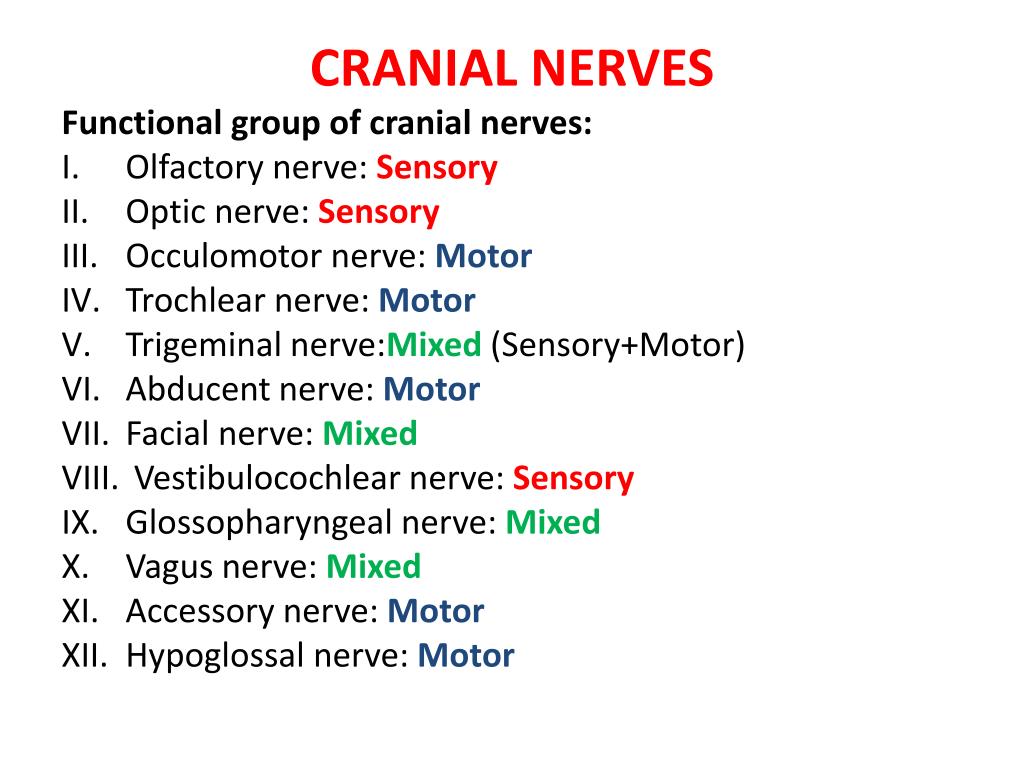Which Of The Following Is Not A Motor Cranial Nerve
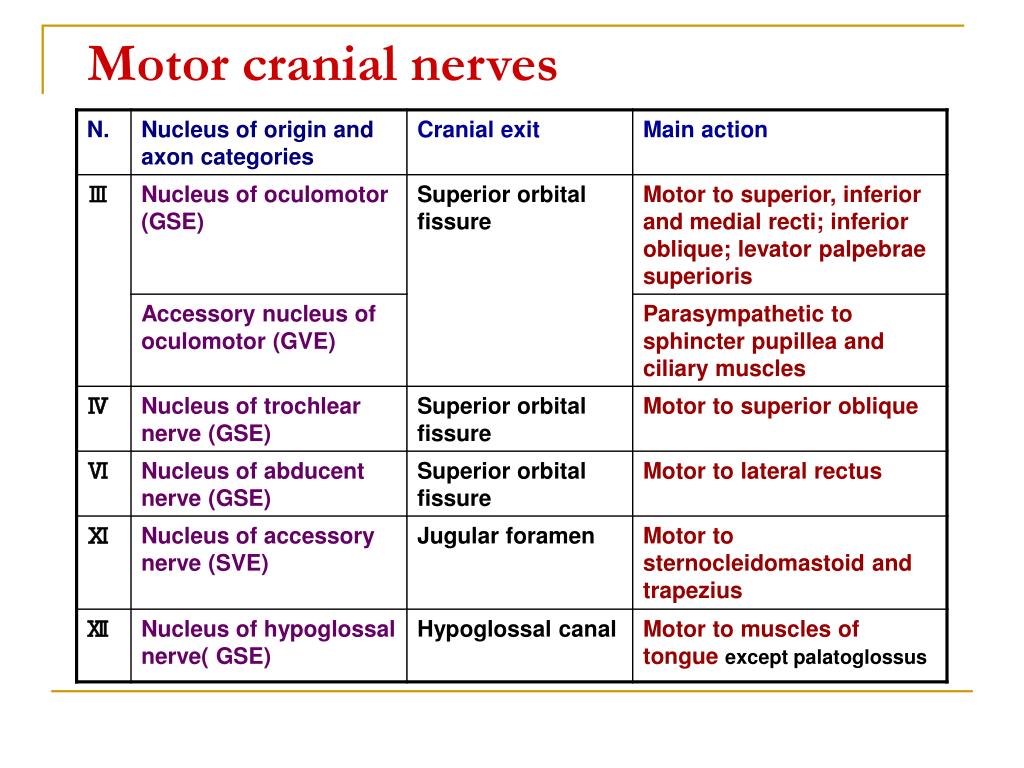
Imagine the intricate network within your head, a symphony of signals orchestrating everything from a smile to a swallow. These signals travel along specific pathways, the cranial nerves, each with a unique role. But sometimes, pinpointing the specific function of each nerve can feel like navigating a complex maze.
At the heart of understanding this complexity lies the ability to differentiate between the motor and sensory functions of these cranial nerves. This article aims to clarify which of the twelve cranial nerves does *not* primarily serve a motor function, shedding light on the crucial distinction that is key to neurological understanding.
The Cranial Nerve Landscape
The twelve cranial nerves emerge directly from the brain, or brainstem, and traverse through openings in the skull to reach their targets in the head and neck. They are numbered I through XII, each bearing a specific name indicative of its function or target.
These nerves fall into three broad categories: sensory, motor, and mixed (both sensory and motor). Sensory nerves transmit information from the body to the brain, while motor nerves relay commands from the brain to muscles. Mixed nerves perform both tasks.
Sensory Nerves: The Messengers
The *sensory* cranial nerves are responsible for conveying sensations from the head and neck to the brain. The Olfactory Nerve (I), for instance, transmits the sense of smell. The Optic Nerve (II) carries visual information from the eyes.
The Vestibulocochlear Nerve (VIII) is responsible for both hearing and balance. These nerves act as messengers, relaying vital sensory data from the external world to the brain for processing.
Motor Nerves: The Commanders
The *motor* cranial nerves control the muscles of the head and neck, enabling movement, speech, and facial expressions. Several cranial nerves primarily serve a motor function.
The Oculomotor Nerve (III) controls most of the eye muscles, enabling eye movement. The Trochlear Nerve (IV) controls a single eye muscle, the superior oblique.
The Abducens Nerve (VI) controls another eye muscle, the lateral rectus. The Accessory Nerve (XI) controls the sternocleidomastoid and trapezius muscles, responsible for neck and shoulder movement.
The Hypoglossal Nerve (XII) controls the tongue muscles, essential for speech and swallowing.
Mixed Nerves: The Versatile Performers
Several cranial nerves have a mixed function, carrying both sensory and motor information. The Trigeminal Nerve (V) is a prime example, responsible for facial sensation and controlling the muscles of mastication (chewing).
The Facial Nerve (VII) controls facial expressions and carries taste sensation from the anterior two-thirds of the tongue. The Glossopharyngeal Nerve (IX) controls swallowing muscles and carries taste sensation from the posterior one-third of the tongue.
The Vagus Nerve (X), often called the "wanderer," has the most extensive distribution, carrying sensory and motor information to and from the organs of the thorax and abdomen. It influences heart rate, digestion, and speech.
The Answer: The Olfactory Nerve (I)
Given this breakdown, the answer to the initial question becomes clear. The Olfactory Nerve (I), responsible for the sense of smell, is purely sensory. It does *not* have a motor component.
While other nerves may have sensory *and* motor functions, the Olfactory nerve's singular role is to transmit olfactory information from the nasal cavity to the brain. Therefore, the olfactory nerve is the correct answer.
Significance in Neurology
Understanding the functions of each cranial nerve is critical in neurological diagnosis. Damage to a specific cranial nerve can produce characteristic symptoms, allowing clinicians to pinpoint the location and nature of neurological lesions.
For instance, damage to the Facial Nerve (VII) can cause facial paralysis (Bell's palsy), affecting the ability to smile or close the eye on the affected side. Similarly, damage to the Vestibulocochlear Nerve (VIII) can lead to hearing loss or balance problems.
Distinguishing between motor and sensory nerve functions is crucial for accurately assessing neurological deficits and guiding appropriate treatment strategies. By understanding the intricacies of these nerves, clinicians can effectively diagnose and manage a wide range of neurological conditions.
"The cranial nerves are the direct lines of communication between the brain and the head and neck, and their proper function is essential for sensory perception, motor control, and overall well-being,"
says Dr. Anya Sharma, a leading neurologist at the National Institute of Neurological Disorders and Stroke (NINDS). Their dysfunction can have profound implications for an individual's quality of life.
A Deeper Dive: Clinical Applications
In clinical practice, evaluating cranial nerve function is a fundamental part of a neurological examination. Each nerve is assessed systematically, looking for signs of dysfunction such as weakness, numbness, or impaired reflexes.
For example, testing the Optic Nerve (II) involves assessing visual acuity and visual fields. Evaluating the Facial Nerve (VII) involves observing facial expressions and testing taste sensation.
These assessments provide valuable clues about the integrity of the nervous system and can help differentiate between various neurological disorders. Modern neuroimaging techniques, such as MRI and CT scans, can further complement these clinical evaluations, providing detailed anatomical information about the cranial nerves and surrounding structures.
Furthermore, understanding the specific functions of each nerve is essential for surgical planning. Surgeons must carefully identify and protect these nerves during procedures involving the head and neck to minimize the risk of postoperative complications.
Looking Ahead: Future Research
Research into cranial nerve function continues to advance our understanding of neurological disorders and guide the development of new treatments. Ongoing studies are exploring the role of cranial nerves in conditions such as migraine, trigeminal neuralgia, and sensorineural hearing loss.
Emerging technologies, such as nerve stimulation and gene therapy, hold promise for restoring function to damaged cranial nerves. Further research is also needed to investigate the complex interactions between cranial nerves and the brain, shedding light on the mechanisms underlying neurological disorders and informing new therapeutic strategies.
Conclusion
The intricate network of cranial nerves serves as a testament to the remarkable complexity of the human nervous system. Distinguishing between the sensory and motor functions of these nerves is fundamental to understanding neurological function and diagnosing neurological disorders.
The Olfactory Nerve (I), with its purely sensory role in conveying the sense of smell, stands out as an example of a cranial nerve lacking motor function. By appreciating the nuances of each nerve, we gain a deeper understanding of the remarkable capabilities and vulnerabilities of the human brain.
